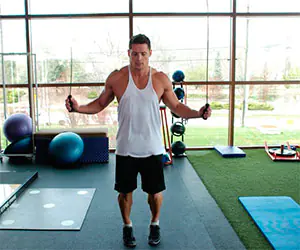Among modern sports (and martial arts in particular), boxing has been one of the most popular, spectacular and in demand for decades. A huge number of people around the globe choose boxing - this type of martial arts is excellent both for self-defense in a street fight and for general physical development and strengthening of the body.
Modern training for boxers (both professional and amateur) includes dozens of different exercises for each muscle group. After all, it is not enough just to learn how to swing your arms correctly - the development of the entire body as a whole, proper breathing, the ability to take a blow, competent and precise movement, and the ability to control an opponent and the environment are also of considerable importance.
One of the most basic exercises with which almost every training session of a boxer (as well as athletes of many other sports) begins is jumping rope. Although seemingly childish at first glance, exercises with a jump rope for boxers are, first of all, an excellent cardio exercise for the athlete’s body: it will warm up the muscles, prepare the internal organs for intense work, and speed up the heartbeat and pulse. Jumping rope is an integral part of any warm-up also because it helps to train the correct technique of moving a boxer, develops endurance and coordination. Another undeniable advantage of this projectile is its low cost and availability.
Below we will look at some of the most common training methods with this equipment:
- Jumping with knees. It differs from the usual execution only in that you need to raise your knees to your waist. The muscles of the legs, abdomen, buttocks and lower back receive the load.
- Legs to the sides. When performing regular jumps, land not with your feet together, but with your feet slightly apart.
- "Scissors". The essence is the same as in the previous variation, only you take one leg back and the other forward, alternating them at each jump.
- Jumps with rotation on an axis. The essence is clear from the name - perform regular jumping ropes, and for each jump, turn a little in a circle.
- Double jumps. Have time to make two jumps while the rope makes one turn.
- "Skiing" Perform regular jumps with the projectile in question, but land not at one point, but to the sides of it, alternating between right and left.



